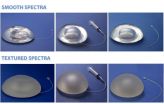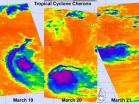"Since its introduction in the 1970s, telemedicine -- the electronic linkage of health care providers and recipients -- has held promise for improved disaster response outcomes. As information technology becomes pervasive, we want to ensure that systems are in place to fully realize its potential for helping patients -- particularly for emergency response," says study senior author Dr. Nathaniel Hupert, associate professor of public health and medicine at Weill Cornell Medical College and co-director of the Cornell Institute for Disease and Disaster Preparedness.
The team's results, published in the Journal of Medical Systems, show that introducing telemedicine linkages between remote specialists and immediate responders in the aftermath of a widespread disaster like an earthquake could decrease both patient waiting times and hospitalization rates at nearby hospitals, while increasing the likelihood that patients with life-threatening injuries receive appropriate care -- as compared with standard emergency department-based triage and treatment.
These findings demonstrate the power of interdisciplinary approaches to complex issues at the border between medicine, public health and logistics, says study lead author Dr. Wei Xiong, assistant professor of public health at Weill Cornell Medical College. "We applied engineering methods more commonly used to analyze queuing systems like telephone call centers and road traffic planning to look at how to effectively manage this new type of emergency medical care."
"We know that when disasters strike, local hospitals, clinics and medical personnel can be completely overwhelmed," says co-author Dr. Aaron Bair, associate professor of emergency medicine and interim director of the UC Davis Center for Health and Technology. "We focused on testing how telemedicine can expedite response, enabling help to get to where it is needed in a relatively short timeframe. Our results show telemedicine improves emergency care at the disaster site -- providing care for more patients sooner, reducing waiting times for treatment and permitting more efficient use of scarce medical resources."
According to the study's principal investigator, Dr. Christian Sandrock, an assistant professor of pulmonary and critical care medicine at UC Davis School of Medicine and a county public health officer in Northern California, high-speed telecommunications links would offer critical benefits for emergency teams when they are responding to a disaster. "We think telemedicine can reduce mortality rates following a disaster by bolstering medical triage capabilities of emergency care providers." He adds, "By helping disaster victims avoid the time it takes to be transported to a designated area for treatment, telemedicine can enable medical teams to actually spend more time caring for patients, so you save lives."
Telemedicine technology is already being tested in the emergency medicine setting. One system of "medical kiosks" in Australia makes use of webcam-equipped laptops, satellite terminals and telemedicine equipment -- including ECG monitors and blood pressure equipment -- to allow physicians to remotely assess patients and give medical advice. The current study focuses on how to manage the multiple data streams resulting from use of such technology in the setting of a mass-casualty disaster like an earthquake.
INFORMATION:
Additional co-authors include Sophia Wang of Cayuga Partners, Ithaca, N.Y.; and Javeed Siddiqui of UC Davis.
The study is available at: www.springerlink.com/content/e184170870812417.
Cornell Institute for Disease and Disaster Preparedness
The Cornell Institute for Disease and Disaster Preparedness (IDDP), founded in 2005, is a joint venture of the Weill Cornell Medical College Department of Public Health and the Department of Operations Research and Information Engineering in the Cornell University College of Engineering. The Institute's vision is to build the nation's leading research and education center in the field of public health response logistics -- defined as the systematic study of a set of physical and human infrastructures, materials and supplies, transport resources, information and communication systems, business processes, decision support systems, and command and control systems required to respond quickly and appropriately to health crises. The Institute pursues this vision through three interlinked goals: primary research, education of the nation's next generation of engineers and public health practitioners/researchers, and outreach to key players at the local, regional and national levels. For more information, visit weill.cornell.edu/publichealth/research/institute.html.
Weill Cornell Medical College
Weill Cornell Medical College, Cornell University's medical school located in New York City, is committed to excellence in research, teaching, patient care and the advancement of the art and science of medicine, locally, nationally and globally. Physicians and scientists of Weill Cornell Medical College are engaged in cutting-edge research from bench to bedside, aimed at unlocking mysteries of the human body in health and sickness and toward developing new treatments and prevention strategies. In its commitment to global health and education, Weill Cornell has a strong presence in places such as Qatar, Tanzania, Haiti, Brazil, Austria and Turkey. Through the historic Weill Cornell Medical College in Qatar, the Medical College is the first in the U.S. to offer its M.D. degree overseas. Weill Cornell is the birthplace of many medical advances -- including the development of the Pap test for cervical cancer, the synthesis of penicillin, the first successful embryo-biopsy pregnancy and birth in the U.S., the first clinical trial of gene therapy for Parkinson's disease, and most recently, the world's first successful use of deep brain stimulation to treat a minimally conscious brain-injured patient. Weill Cornell Medical College is affiliated with NewYork-Presbyterian Hospital, where its faculty provides comprehensive patient care at NewYork-Presbyterian Hospital/Weill Cornell Medical Center. The Medical College is also affiliated with the Methodist Hospital in Houston. For more information, visit weill.cornell.edu.
UC Davis Health System
UC Davis Health System, with its Center for Health and Technology, is a recognized leader for its innovative use of the latest in telecommunications technology to improve the delivery of health care. The health system pioneered the use of telehealth and e-health programs to enable patients from throughout California to receive direct clinical and specialty care without leaving their own communities. Its center encompasses well-established programs in distance education and medical informatics, as well as a telemedicine learning center. These programs provide specialty services throughout California to rural hospitals and clinics, offering easy access to continuing medical and nursing education for clinicians, administrators and other health care providers. More than 500 courses are available via interactive videoconferencing, interactive webcasting and on-demand video. The center also plays an important role in use of high-tech communications for emergency preparedness. For more information, visit www.ucdmc.ucdavis.edu/cht.
END



